How Photography Was Invented
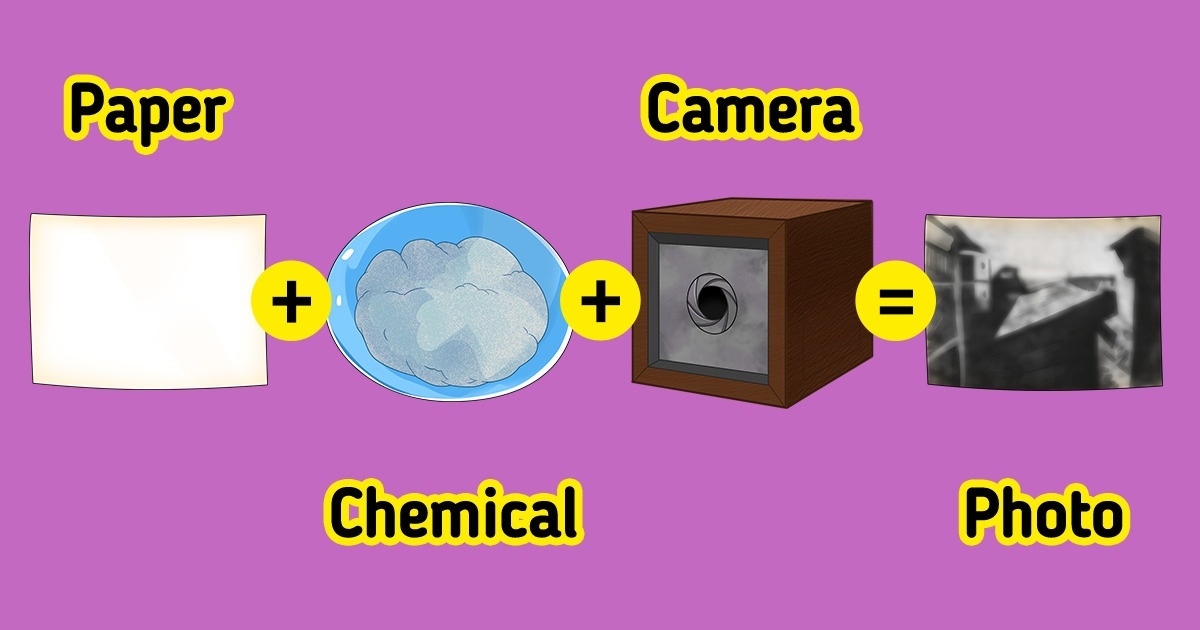
Today, photography is such a regular part of our lives, and the mere thought of this phenomenon being absent just a few generations ago seems weird.
The story of photography is multilateral and covers more than a century. 5-Minute Crafts is telling you what it all started with, about the earliest experiments and their results.
What photography is
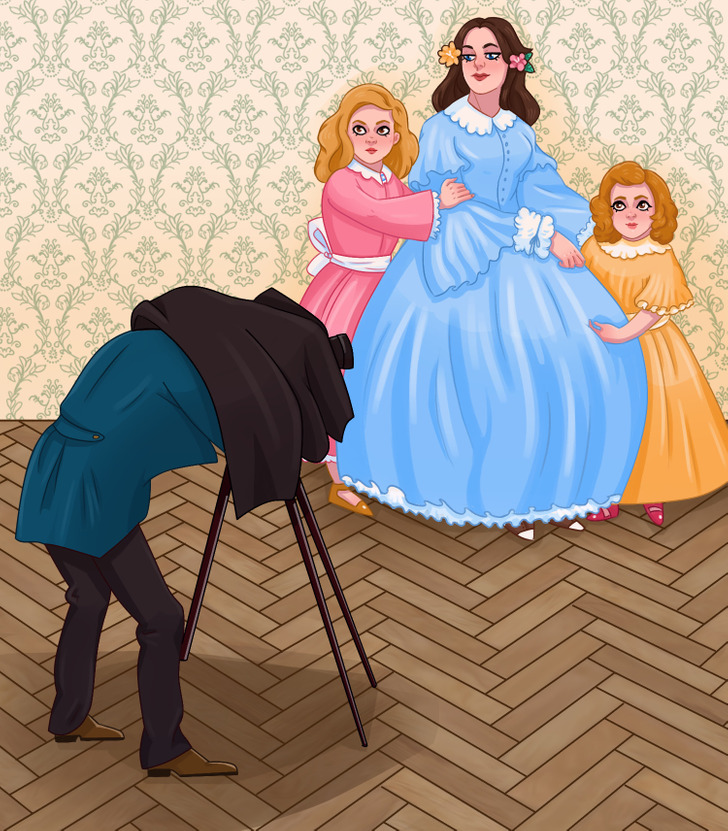
Let’s first define the meaning of this word. Photography is the art of creating durable images electronically by means of an image sensor, or chemically, by means of light-sensitive material (photographic film). The word “photography” has Greek origins and consists of 2 words: phōtós or “light,” and graphé or “drawing.” So “photography” means “drawing by light.”
Camera-obscura
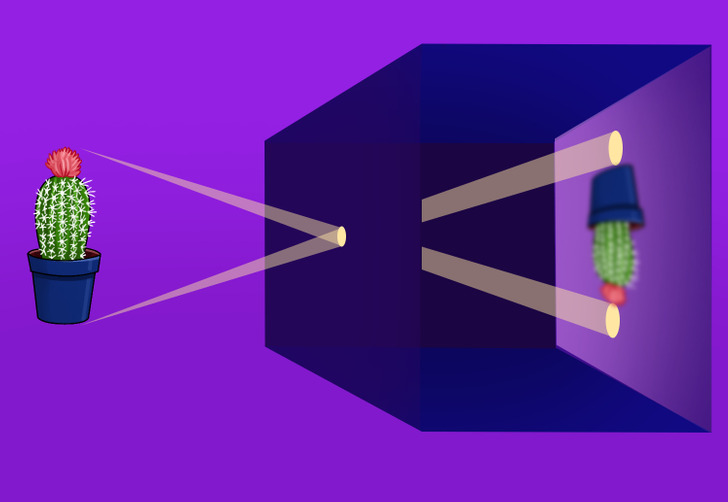
Several different discoveries related to imaging and its capture, camera obscura, and the discovery that certain chemicals darken when exposed to sunlight all contributed to the appearance of photography.
The discovery of camera obscura dates back to Ancient China. Camera obscura is an optical phenomenon that anyone can witness. Imagine a box closed from all sides. Its front wall has a small hole with a lens. When passing through this tiny hole into the dark box, the light projects the image of what is there in front of the box to its back wall.
Why is this important for photography?
In 1614, the chemist, Angelo Sala, noted that sunlight turns powdered silver nitrate black, and that paper wrapped around silver nitrate for a year turns black.
Circa 1800, the British inventor, Thomas Wedgwood, made the first recorded attempt to capture the image in a camera obscura by means of a light-sensitive substance. He placed paper treated with silver nitrate inside the camera. Of course, he didn’t succeed in taking photographs the way we are used to. However, light shadows of objects remained on the paper, which later became darker.
Experiments of Nicéphore Niépce
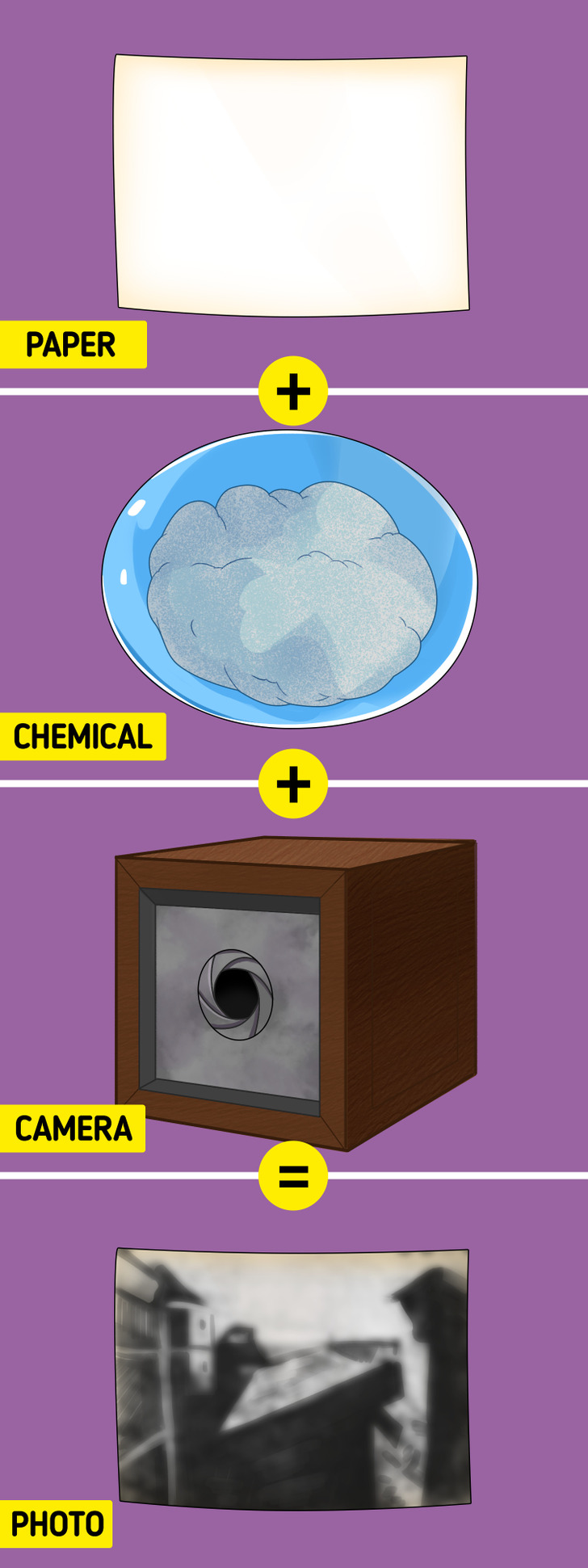
In 1816, the French inventor, Nicéphore Niépce, managed to photograph the images formed in the camera using an improved version of the paper (this one was treated with silver chloride). But the photos were negative because the lightest areas were shading the paper, while dark areas were left untouched. Niépce failed to find a way to prevent the darkening of the whole sheet when it was to be taken out of the camera to see the result.
The inventor continued his experiments. One of his most famous ones was View from the Window at Le Gras, created on a plate covered with bitumen. Niépce covered the pewter plate with a layer of soft bitumen and placed it in the camera obscura. As a result of exposure to light, the bitumen hardened just where the rays hit.
The creation of the photograph lasted long, according to today’s measures, from several hours to several days because bitumen was not as light-sensitive as paper. Eventually, Niépce removed an unhardened part of bitumen with a solvent from the “image” and got a textured picture. That was a view of his room.
Speeding up the process, and the first positive image
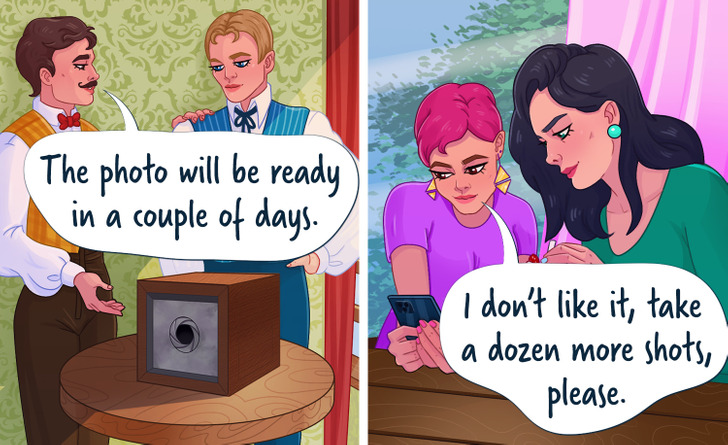
Niépce’s discoveries were continued by Louis Daguerre. He discovered that it was not necessary to spend as much time creating a photograph as Niépce did. Dager realized that the plate with the future image (even if nothing can be seen on it) should be processed with chemicals (he used mercury vapor) and the image would appear. This discovery made it possible to reduce the exposure time from several days to several minutes. Subsequently, Daguerre used a concentrated salt solution for final processing and image fixation.
Later, as a result of numerous experiments with the processing of negatives, Henry Fox Talbot discovered the technique of obtaining positive images from negatives as a result of contact printing. To do this, in a dark room, the negative was pressed against the paper, on which the photograph was subsequently to appear, and a stream of light was directed at it for a short time. As a result of this process, a positive version of the image appeared on blank paper.
Nowadays
Since that moment, the process of photography became much easier and more natural — about 200 years ago, no one could’ve ever imagined how precise and functional modern smartphones and cameras would be. The process of creating color photos was discovered. Today, we know companies with many years’ history that create devices for photography, such as Nikon, Сanon, Fujifilm, etc. Modern people can buy SLR and rangefinder cameras.
But without Niépce’s and Daguerre’s experiments (it was in honor of the latter that the photography process of that time, “daguerreotype,” was named) the world would look different now.